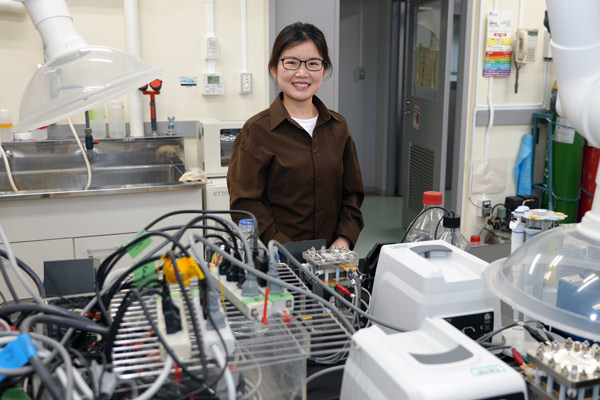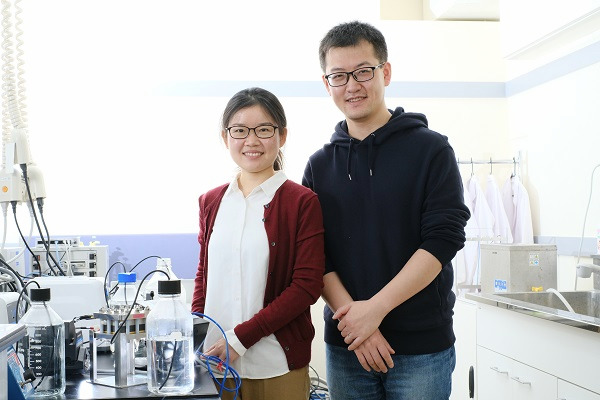Jun. 27, 2022
Green hydrogen goals
Shuang Kong, Postdoctoral Researcher
Please describe your role at RIKEN.
I’m a postdoctoral researcher in the Biofunctional Catalyst Research Team at the RIKEN Center for Sustainable Resource Science. My research is linked to the center’s Innovative Catalysts flagship project, and I’m focused on advanced catalyst development for efficient and sustained water electrolysis (the process by which water is split into oxygen and hydrogen by an electric current). If done with renewable energy, electrolysis can produce ‘green hydrogen’ for use as a cleaner fuel.
Please describe your current research.
At the moment I’m seeking highly stable and active catalysts for polymer electrolyte membrane (PEM) electrolysis—where a cell transfers ions between the anode and cathode using a solid polymer electrolyte to create hydrogen from water. PEM electrolysis is a promising means of efficiently producing green hydrogen. Large-scale implementation is limited by the scarcity of the most efficient known oxygen evolution reaction catalyst, iridium. We want to find alternative catalytic materials in order to accelerate renewable energy transitions.

“My research is important for sustainable development because…”
My research is important for sustainable development because efficient water electrolysis will further the widespread use of renewable, relatively clean hydrogen energy. Hydrogen is light, easy to store and energy dense. It can be converted into chemicals, fertilizers and pharmaceuticals, as well as fuels. It could replace industrial processes that consume fossil fuels and produce huge emissions. For example, green hydrogen can be used for ammonia synthesis, which accounts for about 2% of the world’s fossil fuel primary energy consumption.
What excites you about your current research?
My work is able to extract hydrogen, a clean energy vector, from ordinary water. I feel very excited when I see a large amount of bubbles generated by a catalyst, not only because it indicates high-performing catalysis, but also because of its raw beauty.

Shuang Kong and Ailong Li have created an electrocatalyst for making hydrogen from water that is both stable in strong acid and has a high activity. See for more details, please visit the Feature Highlight page.
What has been your most memorable experience at RIKEN?
I will never forget RIKEN’s 2019 open day. It was the first time I’d explained our group’s research to the public in Japanese. I was grateful that even though I couldn’t speak Japanese fluently, the audience listened patiently. I was especially impressed by the children in the group, and their curiosity and ability to unravel riddles.
How has being at RIKEN helped your research?
RIKEN gives young people many opportunities to apply for funds and collaborations. I was honored to receive an Incentive Research Project Fund in 2021, which gave me more confidence to pursue my research goals. In terms of technology, RIKEN has its own beamline at the SPring-8 synchrotron radiation facility. This means I can easily do advanced characteristic experiments on potential catalysts to further understand the properties of each material. To do this, I use advanced crystallography and spectroscopy techniques, such as X-ray absorption spectroscopy and pair diffraction.
Rate this article

